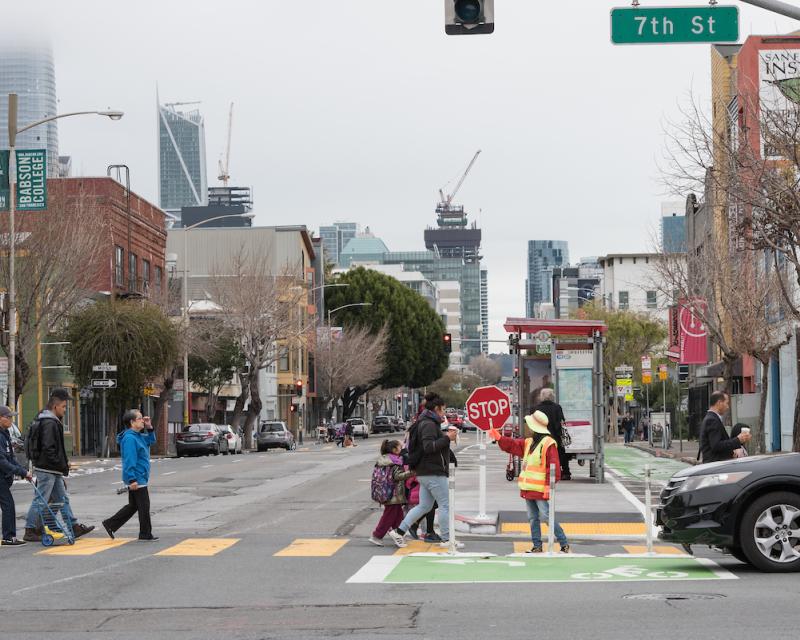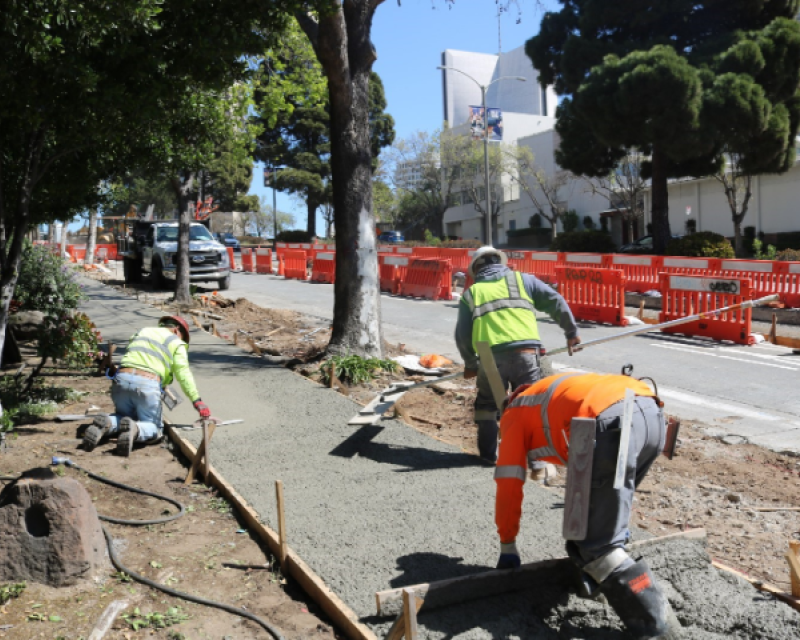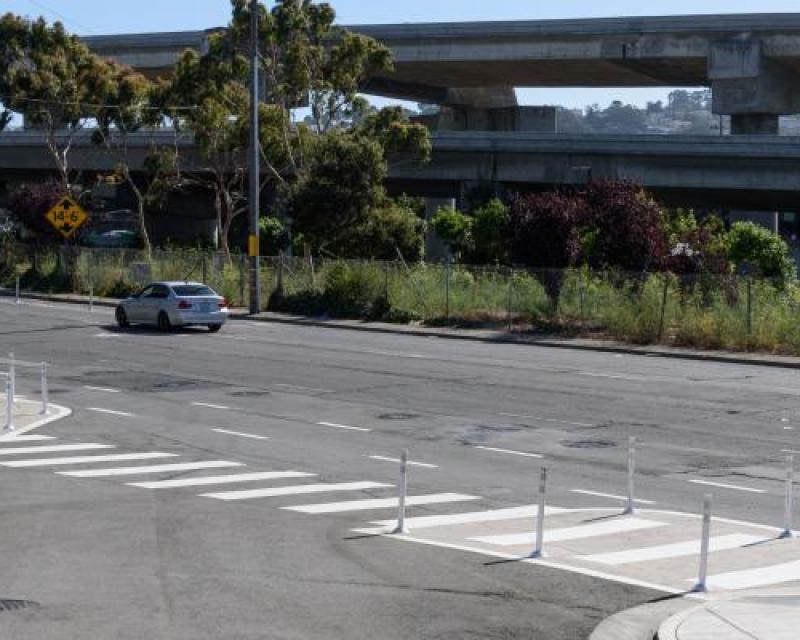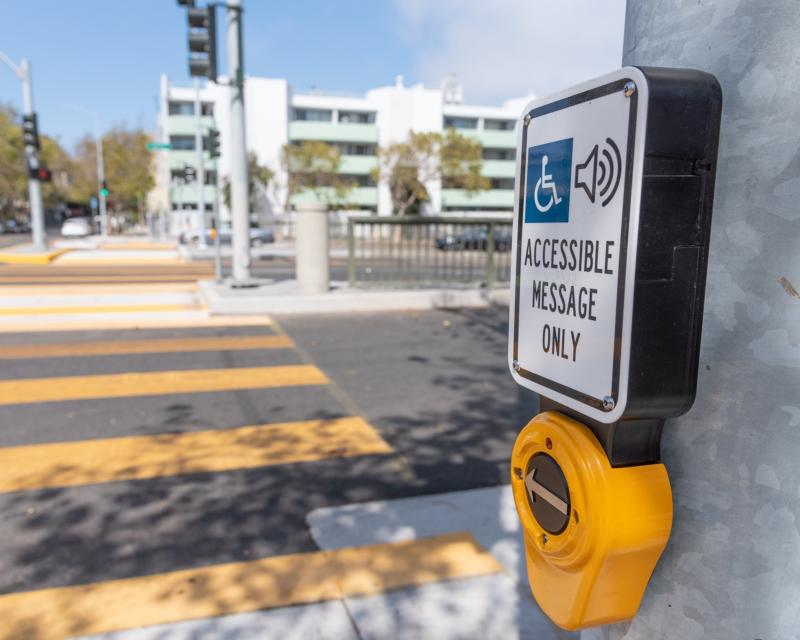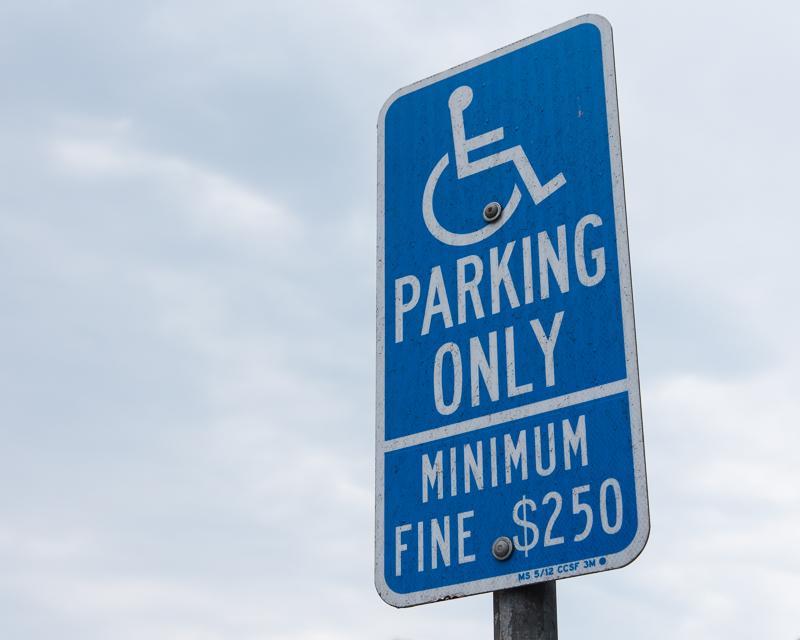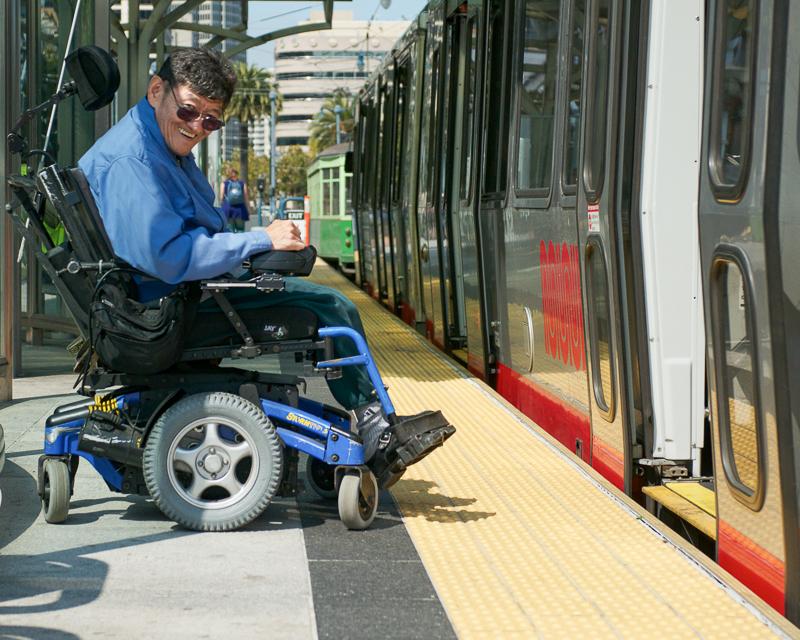Over the past few decades, San Francisco has built hundreds of projects designed to improve pedestrian and cyclist safety. Because people with disabilities and seniors are more likely to be injured or killed in collisions, these active transportation projects are incredibly important to improve accessibility.
The SFMTA's Accessible Services Section works with other groups in the agency and other city departments to ensure accessible features, such as Accessible Pedestrian Signals (APS), curb ramps, and crosswalks, are installed in every active transportation project where possible and appropriate.
When designing streets projects, the SFMTA also considers:
- Ensuring access to the curb for paratransit and vehicles with ramps or lifts.
- Maintaining an accessible path of travel from floating parking and passenger loading to the sidewalk.
- Maintaining accessible path of travel to and from bus stops and shelters.
- Reducing or eliminating conflicts between passenger loading zones and curb-side bike lanes.
Safe interaction between cyclists and pedestrians is prioritized, especially for people using mobility devices, people with unsteady gait, Blind/low vision pedestrians and Deaf/hard of hearing pedestrians. Planners also consider bike lane usability for disabled cyclists (who may ride larger adaptive devices) and other mobility device users who may travel in the bike lane.
Finally, SFMTA staff aim to communicate street design changes to relevant local disability organizations and Orientation & Mobility Specialists.
